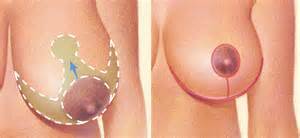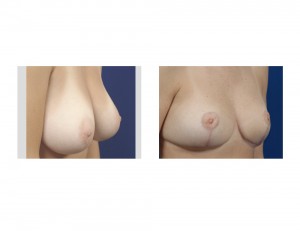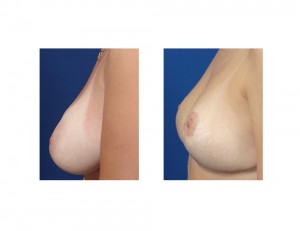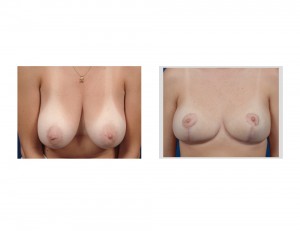Background: The treatment of large breasts has been done for almost one hundred years with a variety of surgical techniques. Despite the many techniques that have been used to create a smaller breast, the one that has stood the test of time is the inferior pedicle method. Also known as the Wise pattern (as the skin excision pattern looks like a W), this method provides a real three-dimensional skin and breast tissue reduction with a significant breast lift.

Case Study: This 35 year-old female had DD cup breasts that were problematic from both a clothes and musculoskeletal standpoint. She had back, shoulder and neck pain with shoulder grooving. She had always wanted smaller breasts since she was a teenager but waited until she was done with having children.


There are two expected events that occur in breast reduction, extensive scars and time to heal them. One has to certain that the benefits of making breasts smaller are worth the scar trade-off to do so. There is also the time needed to reach optimal scar appearance which is at least six months and could be as long as a year after surgery. Also such extensive incisions will result in wound healing problems, albeit often minor, that will take longer to completely heal than most women anticipate.
Case Highlights:
1) Breast reduction is a highly effective breast reshaping procedure but does so at the expense of scars.
2) Significant breast reduction requires the classic anchor or invert T pattern scars that enables a complete three-dimensional beast change.
3) The scars from breast reduction will often take up to 8 weeks after surgery to completely heal and up to one year for complete scar maturation.
Dr. Barry Eppley
Indianapolis, Indiana



